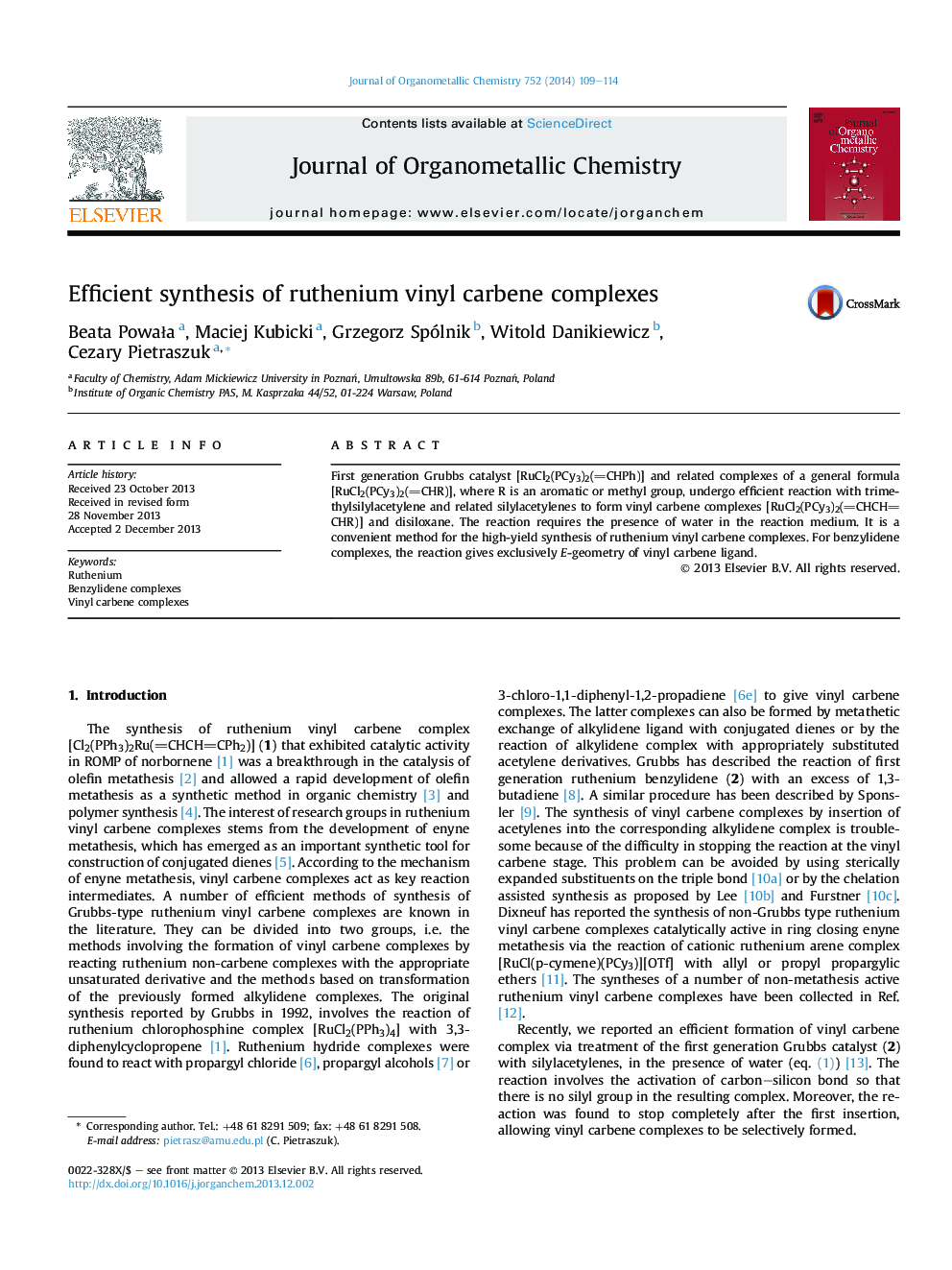| Article ID | Journal | Published Year | Pages | File Type |
|---|---|---|---|---|
| 1321275 | Journal of Organometallic Chemistry | 2014 | 6 Pages |
•Treatment of [RuCl2(PCy3)2(CHAr)] with silylacetylene yields vinyl carbene analogue.•[RuCl2(PCy3)2(CH–CHCHAr)] can be selectively formed with isolated yields up to 84%.•Overall shapes of 4-methoxybenzylidene and vinyl carbene analogues are almost identical.
First generation Grubbs catalyst [RuCl2(PCy3)2(CHPh)] and related complexes of a general formula [RuCl2(PCy3)2(CHR)], where R is an aromatic or methyl group, undergo efficient reaction with trimethylsilylacetylene and related silylacetylenes to form vinyl carbene complexes [RuCl2(PCy3)2(CHCHCHR)] and disiloxane. The reaction requires the presence of water in the reaction medium. It is a convenient method for the high-yield synthesis of ruthenium vinyl carbene complexes. For benzylidene complexes, the reaction gives exclusively E-geometry of vinyl carbene ligand.
Graphical abstract[RuCl2(PCy3)2(CH–CHCHAr)] can be formed efficiently and stereoselectively by treatment of [RuCl2(PCy3)2(CHAr)] with silylacetylenes. The reaction requires the presence of water and involves activation of C–Si bond.Figure optionsDownload full-size imageDownload as PowerPoint slide
